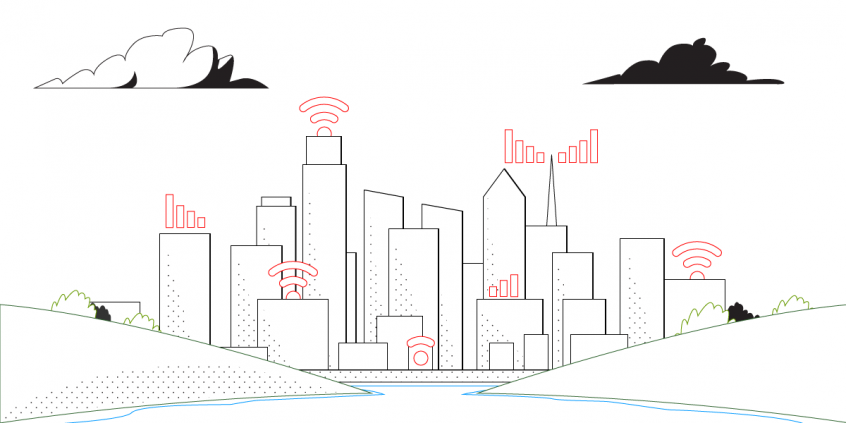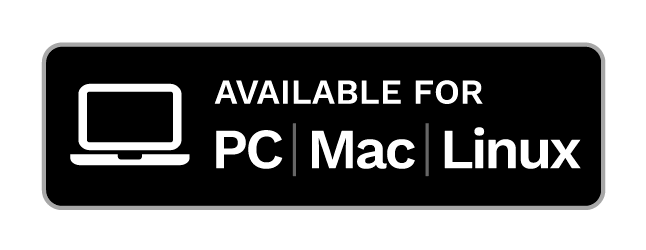Hey Comcast, Do The Right Thing!

Entering into Evidence
In late 2014, someone has gone and filed a class action lawsuit against Comcast over the Xfinity Public Hotspot fiasco. Turns out, the lawsuit talks at some length about my blog posts from earlier 2014, in which we tested the additional power used by Xfinity Home Hotspot routers.
“When news broke that Comcast was turning consumers’ homes into a national public Wi-Fi network, engineers at Speedify, a technology company offering services to increase customers’ Internet connection speeds, began running tests on the routers Comcast was using to establish its Xfinity Wi-Fi Hotspots. The goal was to determine whether Comcast’s equipment used more electricity than comparable equipment that was not emitting a second Wi-Fi network.” “Based on our tests,” the company stated on its website, “we expect that by the time they roll it out to all of their subscribers, Comcast will be pushing tens of millions of dollars per month of the electricity bills needed to run their nationwide public WiFi network onto consumers.”
“Engineers at Speedify“… that’s me. It had all started with me wondering if Speedify customers could get extra Internet speed by joining both their home Internet, and the public Xfinity hotspot for extra speed with Speedify (yes, they can!). But it all went off in another direction as I started measuring power and speeds.
Do the Xfinity Public Hotspots Slow You Down?
The lawsuit lays out a couple big problems. For starters, it claims that, “[the] unauthorized broadcasting of a secondary, public WiFi network from the customer’s wireless router degrades the performance of the customer’s home WiFi network.”
Comcast says it does not slow your Internet because they have reserved extra bandwidth for the public hotspot users on your cable connection. This is true, but it’s a misleadingly small part of the story. The public hotspot is set up on 2.4 GHz, the same channel as your primary WiFi network. So, users that are on the Xfinity Public Hotspot are slowing your WiFi network down, and in all likelihood, your WiFi network is already the bottleneck. I have 30 Mbps Xfinity WiFi at my house (in urban Philadelphia), but I can never get above 20 Mbps on 2.4 GHz WiFi. On 5GHz, I get 26 Mbps as long as I’m in the same room as the router. So I think this is a valid complaint.
Do you get slow Internet from Xfinity? The Speedify software app fixes that, as it combines multiple Internet connections (e.g. Wi-Fi and mobile data or Ethernet) from different networks for increased bandwidth and lower latency. It’s simply a must if you do lots of streaming video, gaming and other bandwidth demanding activities.
Security Risks with Xfinity Hotspots
“…the unauthorized broadcasting of a secondary, public Wi-Fi network from the customer’s wireless router subjects the customer to potential security risks, in the form of enabling a stranger who wishes to access the Internet through the customer’s household router, with the customer having no option to authorize or otherwise control such use.”
Comcast appears to have taken security very seriously. The traffic from the public hotspot is carefully segmented off, and comes out onto the Internet from a different IP address than your home traffic does. Law enforcement, is never going to think that you were responsible for what they did on your router. Unless there’s a bug… Lets be honest, despite appearing to have done a solid design on the security, it’s likely that the bad guys will eventually find some hole. Subtle buffer overruns and race conditions seems to eventually pop up in any system that gets popular enough.
Worried about online cyber attacks, hackers, ransomware? Speedify is a next generation fast VPN for mobility that keeps your online data private from snooping ISPs and also protects you from online hackers so you can be at peace with your Internet connection. And yes, we don’t log any kind of data related to what you do online.
Legalese related to Comcast Xfinity Internet
“Comcast’s actions violate the Computer Fraud and Abuse Act, 18 U.S.C. § 1030;California’s Unfair Competition Law, Cal. Bus. & Prof. Code § 17200; and the Comprehensive Computer Data Access and Fraud Act, California Penal Code § 502. Plaintiffs seek injunctive and declaratory relief, restitution, and monetary damages, individually and on behalf of (1) a national class of all households in the United States that have subscribed to Comcast’s Xfinity Internet Service and that, as a result, have leased wireless routers that broadcast an Xfinity Wi-Fi Hotspot;and (2) a California subclass of all households in California that have subscribed to Comcast’s Xfinity Internet Service and that, as a result, have leased wireless routers that broadcast an Xfinity Wi-Fi Hotspot.”
Wow… I’m going admit up front here that this is beyond me; I’m not a lawyer. The lawsuit says that the software update that enabled the hotspot, “intentionally accessed the protected computers of Plaintiffs and Class members.” I’m really unsure about that bit… is the router that Comcast puts in your home your “protected computer”? It kind of seems to me that it’s their computer, that you agreed they could run in your home. But I’m unqualified to make a strong statement on this one.
The Real Problem with Comcast Xfinity Hotspots: the Permission Issue
“Comcast does not, however, obtain the customer’s authorization prior to engaging in this use of the customer’s equipment and Internet service for public, non-household use. Indeed, without obtaining its customers’ authorization for this additional use of their equipment and resources, over which the customer has no control, Comcast has externalized the costs of its national Wi-Fi network onto its customers. The new wireless routers the Company issues consume vastly more electricity in order to broadcast the second, public Xfinity Wi-Fi Hotspot, which cost is born [sic] by the residential customer.”
To me, there are really two different issues here: the electricity issue and the permission issue.
As far as the electricity bill: it is true that hosting the Xfinity Wi-Fi does increase your electricity bill. How much depends largely on how much people use it… in the middle of the country it might be pennies, living upstairs from a coffee shop in the city could cost you several dollars a year. But if this saves you from paying $9.95 for Internet at some hotel even once during the year, then it’s worth the cost.
Then there’s the permission issue, and this is where Comcast looks terrible. In fact, I think their permission issue is really the ENTIRE issue. Here at Speedify, we have a lot of customers in England using BT, and in Germany using Deutsche Telekom, both of whom offer almost the exact same service (in conjunction with FON) – and all I ever hear from them is how delighted they are to have another WiFi network available when they leave home. No one tricked them into anything, they gladly agreed to host a hotspot in return for WiFi when travelling.
Not only does Comcast sidestep asking permission, even in those masses of giant legal terms and conditions, it turns out that “Nothing… even alerts a consumer that, as a matter of course, Comcast will use a second, independent Wi-Fi network via the wireless router it supplies to the customer.”
But even more damning is that they clearly made a conscious decision to not tell the consumer what they were up to. The complaint points out that, “In contrast, Comcast’s agreement with small business customers demonstrates that when it is in Comcast’s financial interests, it obtains the customer’s explicit authorization to broadcast its second, public Wi-Fi Network.”
If you’re a business user they explain the whole situation to you, and MAKE you check the box. So it’s not like it’s some big piece of extra work to explain it, they have the explanation and the checkbox ready to go.
And then, in case all of that wasn’t bad enough, reports from TechCrunch indicate that even for users who have managed to opt-out, Comcast is simply turning the public hotspot back on every time they upgrade the software on their router.
Conclusion: Comcast Needs to Explain Upfront, Not Sneak Around
This is bizarre stuff. Comcast has what appears to me to be a decent product at a free price (with a few strings attached). But then, rather than just offering it as such, they sneak around, not telling users what they’re doing. They force it on their users, making it hard to get rid of, and then turn it back on without permission even when customers do opt-out.
It seems to me that there was a simple solution. All Comcast had to do was be up-front:
- Explain to users that if they run the hotspot in their home that they get to use the Wi-Fi when they travel. Yes, there’s a tiny bit of electricity that gets used, but if it saves you from having to pay $9.95 for Internet access somewhere, even once in the year, then it’s a good deal.
- Give people an easy way to opt-out. Comcast could even make opting out lose you the ability to use the other public hotspots (without some small extra fee). I actually think that in this case, opt-out is fine, they do need critical mass for the public hotspots to be useful. But just make it easy for users who care.
Unfortunately, it seems like Comcast simply doesn’t know how to be nice to their customers, even when they want to.
If you’re looking for a fast and reliable Internet connection that can also protect you against online threats – Get Started with Speedify today for FREE – no strings attached, no email sign-up necessary, no logging of data!
Download Speedify
Speedify is the only app that combines your wifi, cellular, wired, and even your friend’s phone signals – into one ultra-fast and super secure link that keeps you all connected for the best possible live streaming, video calling, or just posting to your favorite app.
Subscribe to Speedify on YouTube
Get news, success stories, and our weekly livestreaming show Speedify LIVE! Tune in to chat and ask questions or to yell at us if that makes you happy. We're from Philly, we can take it.




